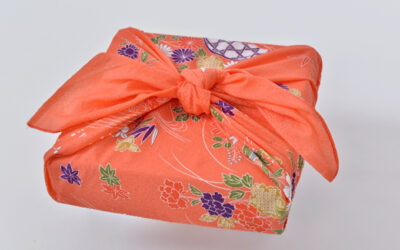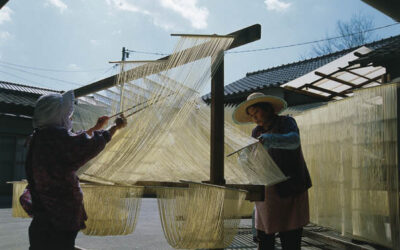
Cloth is the work horse, and often unsung hero, of the kitchen. In the Japanese kitchen, cloth enables the cook to perform a wide range of tasks such as lining steamers, draining and straining, enveloping, and shaping.
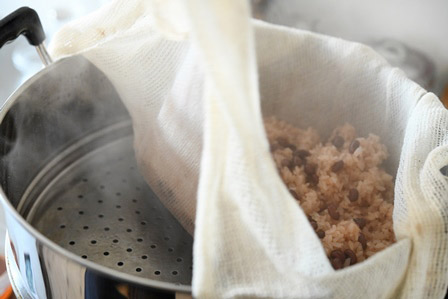
fukashi nuno 蒸し布
Cloths known as fukashi nuno 蒸し布 are used to line steamers. They are especially effective when making sekihan (red rice and beans). The cloth prevents the rice from sticking to the steamer surface and allows for mixing (distributing and redistributing) the beans with the rice. The cloth can also envelop the cooked rice to keep it moist.
Some fukashi nuno are made from asa 麻 linen (below, right), others from men 綿 cotton (below, left).
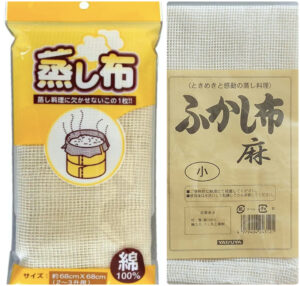

Wrapping before marinating
Wrapping foods in cloth before marinating them in miso and/or sake kasu (lees) is another use for sarashi cloth. The recipe for scrumptous Miso-Marinated Broiled Fish is in my book, WASHOKU, Recipes from the Japanese Home Kitchen (Ten Speed Press, 2005), Page 229.
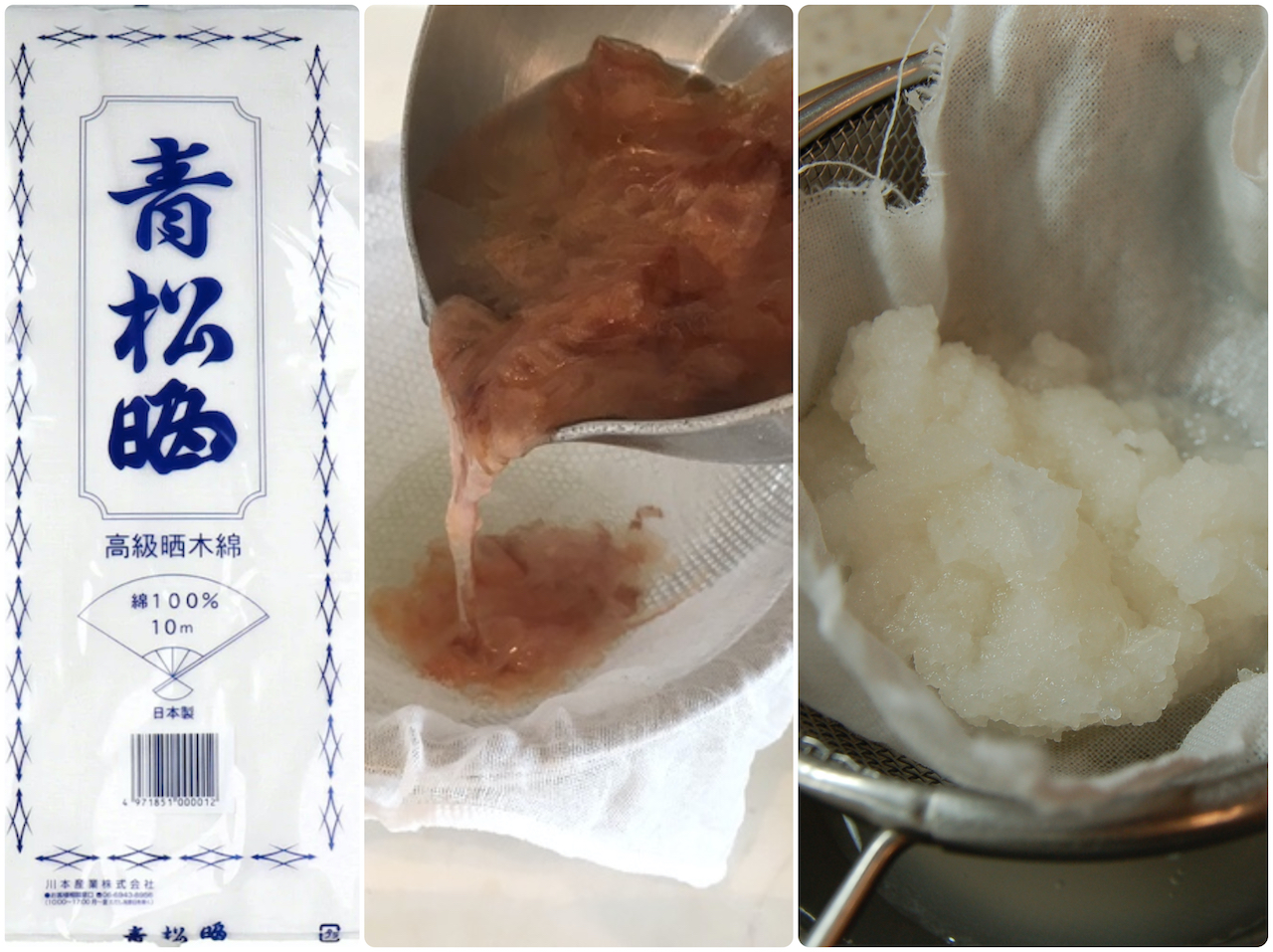
sarashi 晒し
Straining stocks and draining excess liquid from grated daikon is best done with SARASHI, a fine-woven muslin-like cotton cloth.
The stock most often used when making Japanese dishes is a sea based one, a combination of kombu (kelp) and katsuo-bushi (bonito fish flakes): Standard Sea Stock
Grated daikon is served as a condiment with noodles, fried foods (such as tempura) and nabe hotpots. It can also be added to an oil-and-vinegar salad dressing to add a zippy sharpness.

Enveloping and Shaping
Kinton 金団, literally “golden cluster,” is the name of this cushion-shaped sweet.
Shaping these clusters is traditionally done with a fine-meshed, muslin-like cloth called sarashi, though a double layer of cheesecloth could be used instead. Either way, place the sweet potato paste (enclosing a whole, or chunks of, syrup-stewed chestnut) in the center of the cloth. Bring the edges of the cloth up and twist slightly to leave an impression of folds on the sweet potato paste.
Pictured above are examples of kinton made with golden-fleshed, red-skinned sweet potato (Satsuma imo) and purple-fleshed sweet potato (murasaki imo).
Download a recipe for making kuri kinton
Visit my Kitchen PROJECTS page for a recipe and instruction on making temari sushi. Serve it on Doll’s Day (Hina Matsuri), celebrated on March 3.

